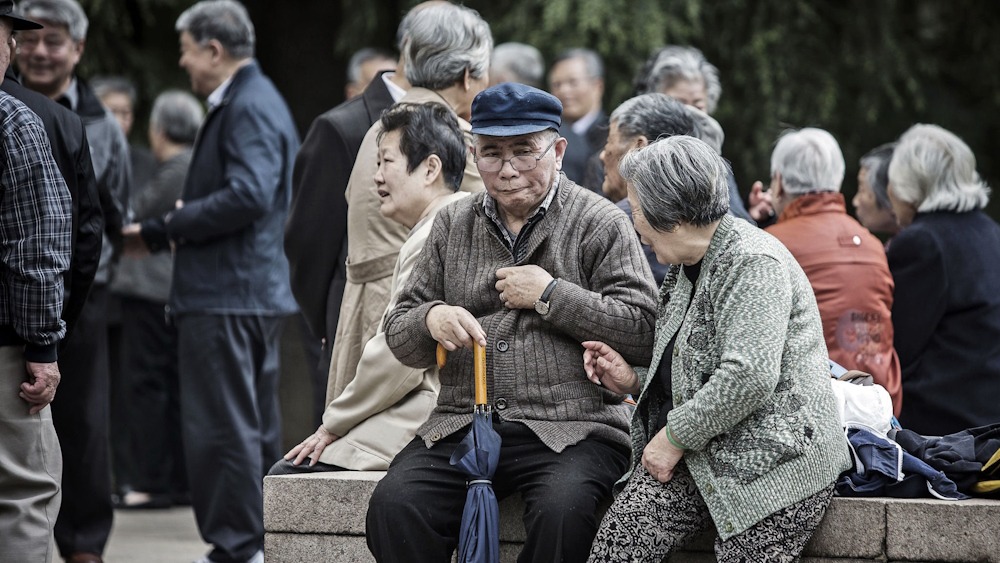China increasing its low retirement age

China confronts the unavoidable reality of increasing its low retirement age. Faced with an economic contraction and a swiftly aging demographic, China has initiated a move to elevate its notably low retirement age thresholds. China maintains one of the lowest retirement ages among significant economies, permitting women to retire as early as 50 and men at 60—policies that have remained consistent since the 1950s. Beijing has consistently expressed a desire for its citizens to extend their working years, yet it has repeatedly delayed implementing any policy adjustments due to concerns over potential social backlash. The situation has become increasingly pressing as the nation faces a downturn in birth rates and a diminishing labor pool.
The National People’s Congress, China’s foremost legislative authority, announced on Tuesday that it is currently assessing a draft law aimed at “gradually delaying mandatory retirement ages.” However, despite the announcement, Beijing refrained from disclosing any specifics. The extensive coverage by state media regarding this development suggests that the government is gauging public reaction amidst elevated youth unemployment and financial constraints faced by local governments in delivering essential services, including pension disbursements. The government underscored that the rollout will be incremental.
“The policy’s gradual implementation suggests that the immediate release of labor into the market will be modest, thereby constraining its overall effect on employment dynamics,” reported the official Xinhua News Agency, quoting Yuan Xin, deputy head of the China Population Association. A growing number of young Chinese are coming to terms with the inevitability of a higher retirement age. In recent years, several state-owned enterprises have conducted internal briefings regarding the plan. Nevertheless, a hashtag concerning the plan sparked intense debates on Chinese social media. Several users reported that their posts regarding the announcement have been removed from Weibo, a prominent Chinese microblogging platform. Leaders have recognized the necessity of postponing retirement ages. In its economic strategy revealed in 2021, Beijing indicated plans to incrementally increase retirement ages through “small-step adjustments” by the conclusion of 2025.
In numerous nations, such as France and Russia, efforts to increase the retirement age have sparked significant protests. In 2015, Chinese authorities pledged to incrementally increase the retirement age, ensuring that any changes would follow public consultation. State researchers have proposed an incremental increase in the retirement age, suggesting an extension of three months annually. Nonetheless, the decision provoked significant opposition.
Certain analysts have suggested that the government might consider increasing the retirement age for women initially, aligning it with that of men. Up to this point, women employed in blue-collar positions within the state sector have been eligible for retirement at the age of 50, whereas their counterparts in other professions have continued to work until the age of 55.
The private sector exhibits greater flexibility, allowing individuals to typically extend their working hours. Currently, local governments are experiencing a financial shortfall coinciding with an influx of retirees. China has commenced reductions in medical benefits for certain retirees. Recent policy adjustments across multiple Chinese provinces and regions have significantly reduced the financial support available for medical care, particularly impacting the elderly, which has led to widespread public discontent and protests.
By 2050, projections from the United Nations indicate that 31% of the Chinese population will be aged 65 or older. By the year 2100, the proportion is projected to reach 46%, nearing the threshold of half the population. In the United States, the anticipated shares are projected to be 23% and 28%, respectively. Last year, China’s working-age population, categorized by the government as individuals aged 16 to 59, declined to 865 million, representing 61% of the overall population, according to official statistics. That figure decreased from 907 million in 2016, representing 66% of the total population.
In the intervening decades, China’s average life expectancy has nearly doubled, reaching 78.6 years in 2023, up from approximately 40 years in the early 1950s, coinciding with the inception of the current retirement framework. China is currently witnessing a significant wave of retirements among its cohort of individuals born in the aftermath of the catastrophic famine of the early 1960s. The deceleration of economic growth, propelled by a decline in the property market and contractions in private investment, underscores a pressing need for action.
Despite government subsidies, projections from 2019 by the Chinese Academy of Social Sciences indicate that by 2035, China’s state-led urban pension fund will deplete the funds amassed over the last twenty years, necessitating a complete dependence on contributions from new workers. The prevailing concern is the potential inadequacy of the workforce to sustain an increasingly aging demographic. Beijing has highlighted specific economic advantages stemming from the “silver-hair” economy, including the essential growth of nursing home facilities. Nonetheless, retirees in China generally do not constitute a significant consumer base, which suggests that subdued demand and the financial pressures associated with eldercare may further impede economic growth.
